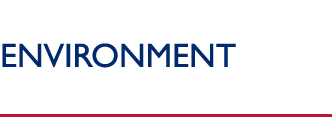Global Development Alliances
USAID’s Commitment to Partnerships
The Global Development Alliance (GDA) model represents USAID’s commitment to change the way it implements its assistance mandate. USAID is working to mobilize the ideas, efforts, and resources of governments, businesses, and civil society by forging public-private alliances to stimulate economic growth, develop businesses and workforces, address health and environmental issues, and expand access to education and technology. Alliances incorporate a diverse array of USAID and partner resources to arrive at solutions only available through pooled efforts. The combination of complementary assets has encouraged innovative approaches, and more effective problem-solving and deeper impact. Importantly, public-private sector conversations almost always lead to a better understanding of development challenges.
At the World Summit on Sustainable Development in 2002, the United States showcased how it promotes sustainable development in 148 countries through concrete actions involving the partnerships of numerous public and private institutions. This new alliance model represents a fundamental reorientation in how USAID sees itself in the context of international development assistance, relates to its traditional partners, and seeks out and develops alliances with new partners.
Since 2001, USAID has supported approximately 290 public-private alliances with approximately $1.1 billion in support, leveraging almost $5 billion in outside contributions. The Office of Global Development Alliances believes that such partnerships should bring at least one-to-one leveraging of USAID resources with additional non-federal resources.
What Are the Attributes of Successful Alliances?
- Joint definition of the problem and a shared solution by all alliance partners;
- Commitment among partners to share resources, risks, and rewards;
- Looking toward new partners (or existing partners in new ways) for innovative approaches to get the job done; and
- Leveraging significant resources that may include financial support, in-kind contributions, and intellectual property.
Illustrative USAID Public-Private Alliances in the Water Sector
Community Water and Sanitation Facility
In collaboration with the Cities Alliance, USAID launched the Facility with seed funding of $2 million to support local authorities and their partners in developing public-private partnerships to expand water and sanitation services to urban slum communities. The Facility provides grants that leverage local resources at least 2:1. (PDF 1.295MB)
Safe Drinking Water Partnerships
USAID is engaged in a range of partnerships to improve water quality and hygiene to reduce water-borne disease, including the Safe Drinking Water Alliance and The International Network to Promote Household Water Treatment and Safe Storage. Simple household-level water treatment and safe storage interventions can lead to dramatic improvements in drinking water quality and typical reductions in diarrheal disease of 30 to 50 percent or more — making an immediate difference to the lives of those who rely on water from polluted rivers, lakes and, in some cases, unsafe wells or piped water supplies. (PDF 592KB)
Community-Watersheds Partnership Program
The Coca-Cola Company (TCCC) and USAID have joined together to provide $1.7 million annually in incentive grants to local TCCC system business units and bottlers and USAID Missions to carry out a broad range of water-related projects in countries where both operate. The alliance matches the business objectives of a major international corporation with the needs for water resources management and service delivery, and works in a diverse array of activities ranging from water supply, sanitation, and hygiene to watershed management and biodiversity protection.
(PDF 648KB)
White Water to Blue Water
The White Water to Blue Water Initiative (WW2BW) is designed to promote the practice of integrated watershed, coastal, and marine ecosystem-based management in support of sustainable development. The Initiative has spawned hundreds of different alliance relationships with governments, international organizations, private sector businesses, and civil society, including USAID’s &$36;1.5 million matching partnership with the United Nations Foundation to support the Meso-American Reef Alliance in Mexico and Central America. (PDF 284KB)
The West Africa Water Initiative (WAWI)
This $45 million partnership was founded by the Conrad N. Hilton Foundation in 2002, and works with governments and communities to increase access to safe drinking water and sanitation in rural and peri-urban areas, reduce waterborne disease, and ensure ecologically and financially sustainable management of water quantity and quality in Ghana, Mali, and Niger. The Initiative involves 13 partners in the international water sector, including a private foundation, an international agency, a bilateral donor, non-governmental organizations (NGOs), academia, and a private sector industry association. (PDF 928KB)
Is an Alliance an Appropriate Option?
An alliance should be considered when it supplements and deepens the impact of an objective, planned results, or activities. All prospective alliance members should have a clear common cause for the alliance, believe in alliances as a better strategy to solve problems than the status quo, be willing to treat each other as equal partners, have operational practices that incorporate elements of corporate responsibility such as commitments to human rights and environmental protection, be willing to commit and share resources, and be able to work creatively together to take risks that individually they might not.
How to Identify Appropriate Alliance Members
Partners can be as diverse as the alliances themselves, including NGOs, foundations, universities, associations, small and large businesses, multilateral or bilateral donors, and government entities. Early steps for identifying the right partners might include determining the organizations that make the largest investment in the sector or region; speaking at chambers of commerce or industry events; hosting a forum for potential private sector partners; or conferring with Embassy Commercial Attaches or Ministries of Commerce.
Several resources can help locate potential alliances:
- Internet searches may be the first way to start locating relevant resources, including a review of business directories, industry associations, and news items.
- Associations serve as an industry focal point and may provide one of the best networking opportunities with member companies.
- The USAID Office of Global Development Alliances (www.usaid.gov/gda) has developed a network of hundreds of organizations, from private sector companies to foundations, through its concentrated work on alliances and Corporate Social Responsibility.
Back to Top ^


